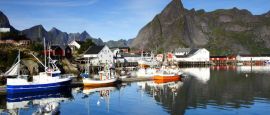Where to stay in Norway
Norway is bursting with first class establishments, many of which are family run. The big chains – Kempinski, Radisson and so on – are all present in larger towns and cities. Business hotels often drop their rates at weekends and during the summer low-season in many areas.
Pensjonat (guest houses) are generally smaller and offer less elaborate facilities than hotels. British-style B&Bs don’t really exist in Norway with the closest equivalent being rooms offered in private houses. Local tourist offices will have information about these, but keep an eye out for roadside signs with rom or husrom on them.
Offsite camping is permitted in uninhabited areas (not lay-bys), but fires are illegal in field or woodland areas between 15 April and 15 September. You must ask farmers for permission before camping on their land.
There are over 100 youth hostels spread over Norway, some of which are open all year round. Others are in apartment houses attached to schools or universities and are only open in summer.
A rorbuis a cottage traditionally used by northern fishermen during the winter cod-fishing season. Equipped with all the necessary facilities, these are leased to holidaymakers during the summer. Prices vary wildly depending on comfort and location. The Lofoten Islands are the most popular location for these.
The ubiquitous hytter (cabins or chalets) and holiday apartments are very popular types of accommodation found across Norway, either in organised holiday parks or alone, often in remote mountain, coastal or lakeside locations. Local tourist offices can provide details.
Do you have any Feedback about this page?
© 2025 Columbus Travel Media Ltd. All rights reserved. No part of this site may be reproduced without our written permission, click here for information on Columbus Content Solutions.




 You know where
You know where